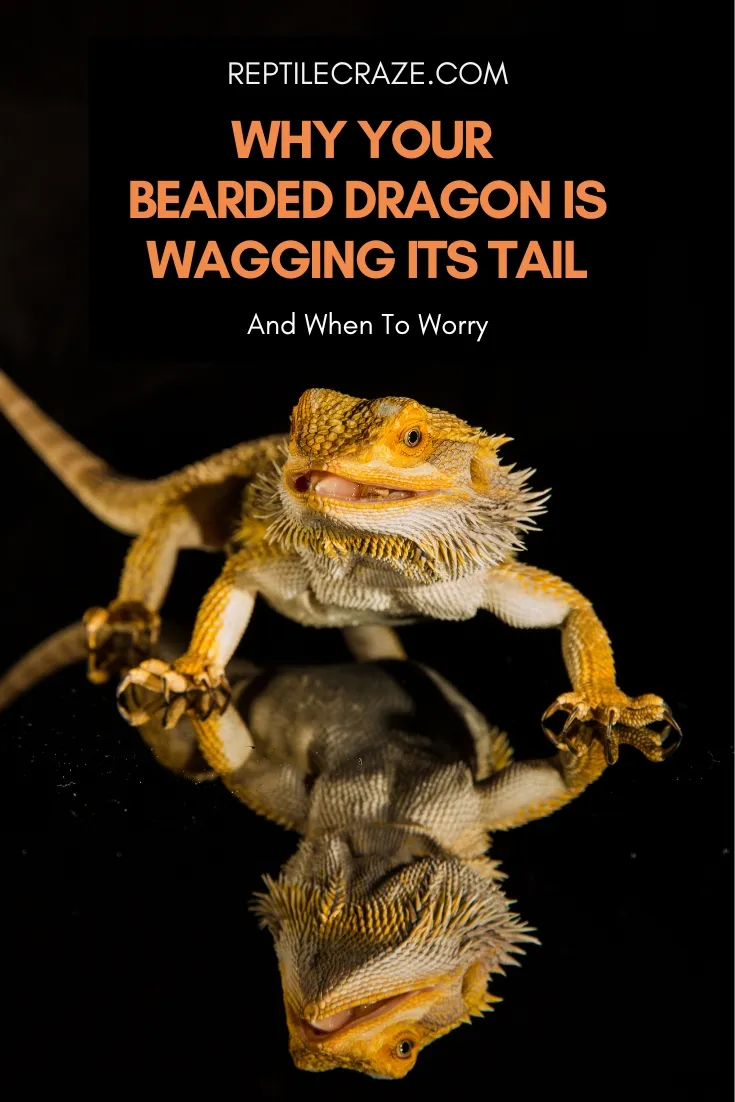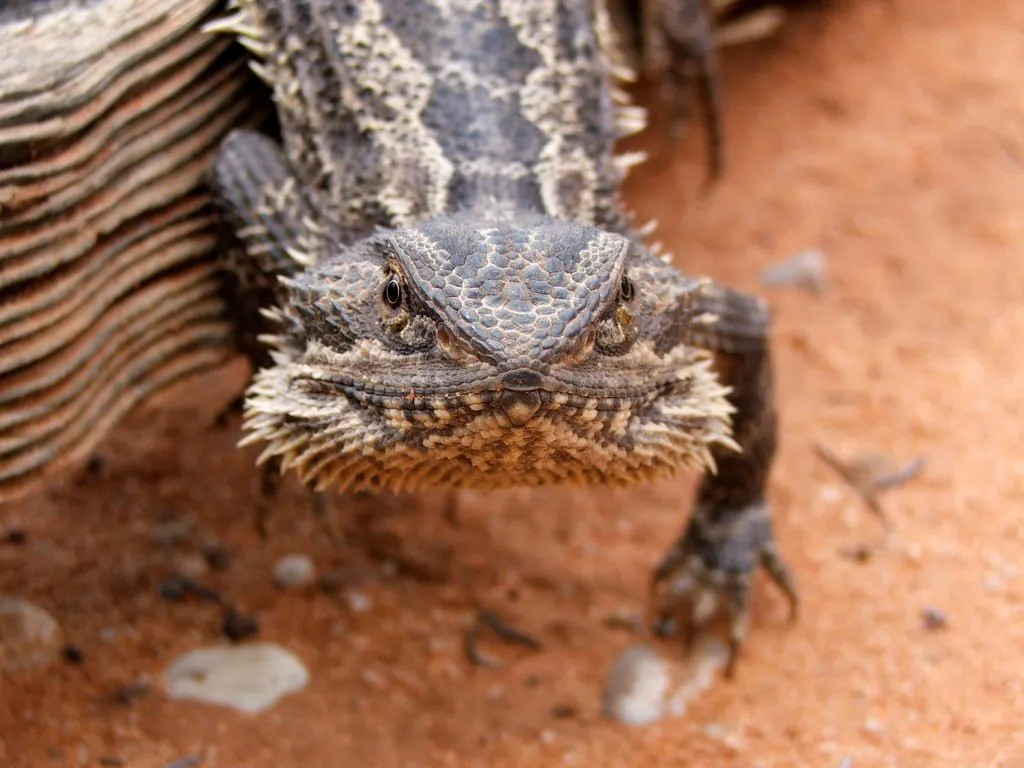
Have you ever noticed your bearded dragon waving its tail and wondered what it could mean? If so, you’re probably not alone!
A bearded dragon’s tail “wag” is usually expressed as a side-to-side twitch at the end of its tail. These movements can signal excitement, aggression, or stress. Observing other body language and behavior will help you interpret the meaning of bearded dragon tail movements.
In this article, we will explore the reasons why your bearded dragon might be wagging its tail and provide some useful information to help you better understand your pet. So, read on to learn more about why your bearded dragon is wagging its tail.
Table of Contents
Is Your Bearded Dragon Tail Wagging Or Tail Twitching?
When we think about a wagging tail, we usually think about the joyful way that dogs express happiness and excitement. A dog’s excited tail wag is usually characterized by a lively and vigorous side-to-side motion that is impossible to miss.
This is not the type of tail wiggle that bearded dragons typically exhibit; rather, they usually twitch their tails in a much more subtle manner – more like a cat. These are side-to-side movements of the end of their tail that can be fast or slow.
Occasionally a beardie’s whole tail will move, which does look more like a “wag” than a “twitch”. You can see an example of this below.
This subtlety makes it difficult to distinguish between the different types of tail twitches. Knowing a bearded dragon’s body language is important to understand why they are wiggling their tails.
Tail Twitching vs. Involuntary Twitching
Tail twitching should not be confused with involuntary muscle twitching or shaking. Bearded dragons may sometimes display twitchy, involuntary movements which can be caused by nutrient deficiencies or other medical issues.
One of the most serious of these illnesses is metabolic bone disease (caused by calcium deficiency) which can cause muscle twitching in the tail or elsewhere. These involuntary twitches can be very obvious or very subtle.
If your bearded dragon is displaying involuntary movements of the body or limbs, then it would be wise to speak with a veterinarian who specializes in reptiles to get an accurate diagnosis and proper treatment plan.
Tip: If your bearded dragon is suffering from metabolic bone disease, most likely you haven’t offered enough calcium or you have a bad UVB bulb or no UVB bulb at all. We show you the best UVB bulbs for bearded dragons here.
Why Do Bearded Dragons Twitch Their Tails?
Now that we’ve established that we are talking about tail twitching rather than tail wagging or disease-related twitching, what does tail twitching mean?
Excitement
Beardies get excited about their
Your bearded dragon may also twitch its tail out of curiosity when it sees something that interests it.
A good example of this is when they see their reflection in a mirror or window; the sight may surprise them and make their tails twitch out of curiosity or excitement.
Aggression

Sometimes, when your bearded dragon perceives a threat, it will twitch its tail as a warning signal before attempting to attack or flee.
This can be seen in territorial disputes between two beardies or if they are defending themselves against a predator.
Aggressive/defensive tail twitching will be accompanied by other body language signals, such as hissing and a darkened beard.
Stress
Bearded dragons may also twitch their tails when they are stressed, scared, or feeling threatened. This could be due to an environment that is too crowded or noisy, unfamiliar people or animals, or any number of other stressful events.
If your dragon starts twitching its tail while you are handling or otherwise interacting with it, this could be a sign that they are feeling uncomfortable around you.
Assess the situation and make sure to eliminate any identified stressors.
Loosening Shed Skin
Although less common than the usual end-of-tail twitch, bearded dragons may also be seen vigorously wagging or waving their tail around. This may be an attempt to crack and loosen old skin that is ready to be shed.
Tail Whipping In Bearded Dragons
Tail whipping is quite obviously different from the usual tail twitch that bearded dragons do, but it does loosely fall under the category of “tail wagging” so we thought we’d give it a mention.
Tail whipping in bearded dragons involves the rapid throwing or whipping of their tail back and forth as if they are trying to swat something away.
This is usually done when they are feeling threatened, either by another beardie or something else in its environment – including you (read this article to learn if your beardie really likes you)!
While bearded dragons will do a tail whip if feeling threatened, this is not a primary form of defense for them like it is in iguanas and monitor lizards and is unlikely to hurt you.
However, it is a very clear form of body language that you should pay attention to.
Tail whipping is usually accompanied by other defensive body language like flattening against the ground, hissing, and a dark beard.
Bearded dragons exhibiting this behavior are stressed, scared, or feeling threatened and may need to be left alone until they have calmed down.
Conclusion
There are a number of reasons why your bearded dragon is twitching its tail. It could be out of excitement, aggression, stress, or even just trying to dislodge shedding skin.
Understanding the signs that your bearded dragon gives off can help you better understand and care for them!
Pay attention to their body language, and you’ll be able to figure out the meaning behind their tail twitching in no time. Thanks for reading!
- Enchi Ball Python: A Unique and Stunning Morph of Python regius - March 27, 2025
- Emerald Tree Monitor: The Enigmatic Green Guardian of the Rainforest - March 26, 2025
- The Egyptian Cobra (Naja haje): A Fascinating Serpent - March 25, 2025
